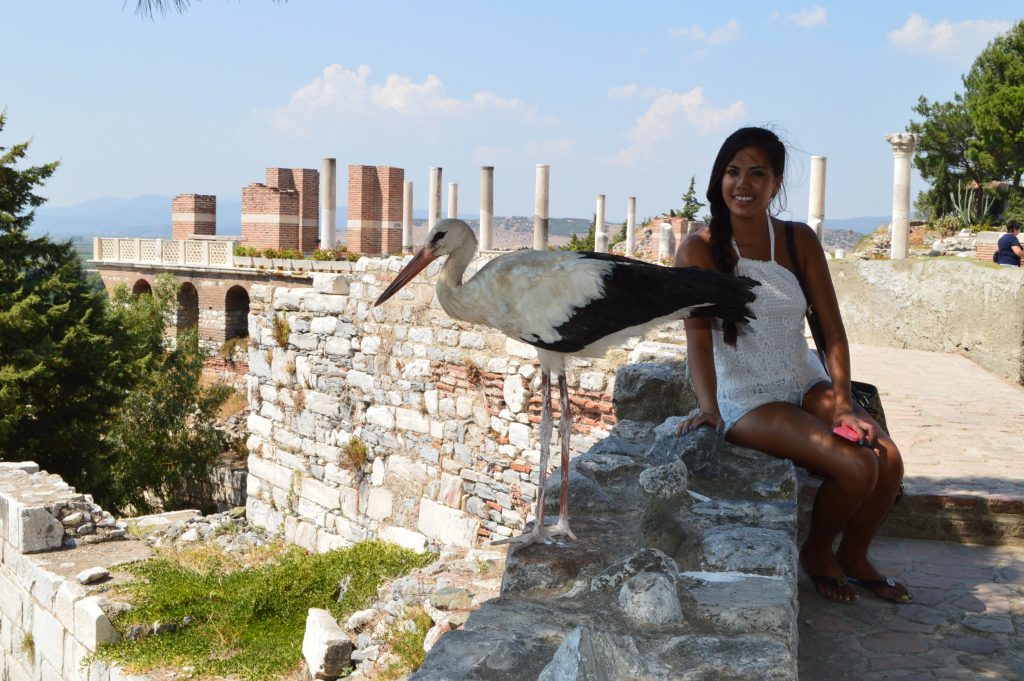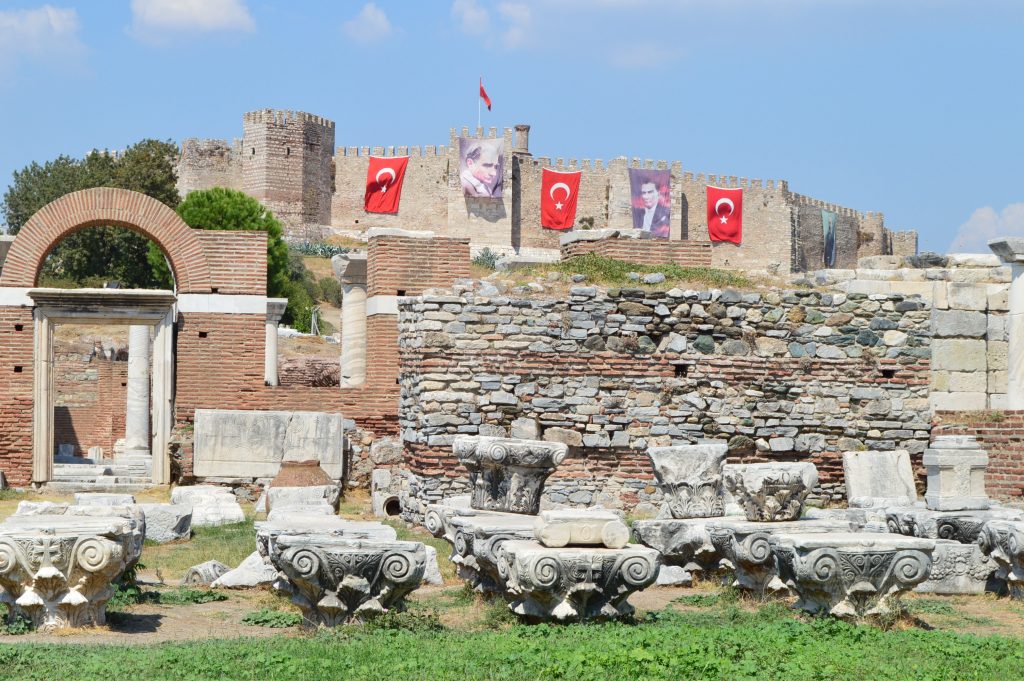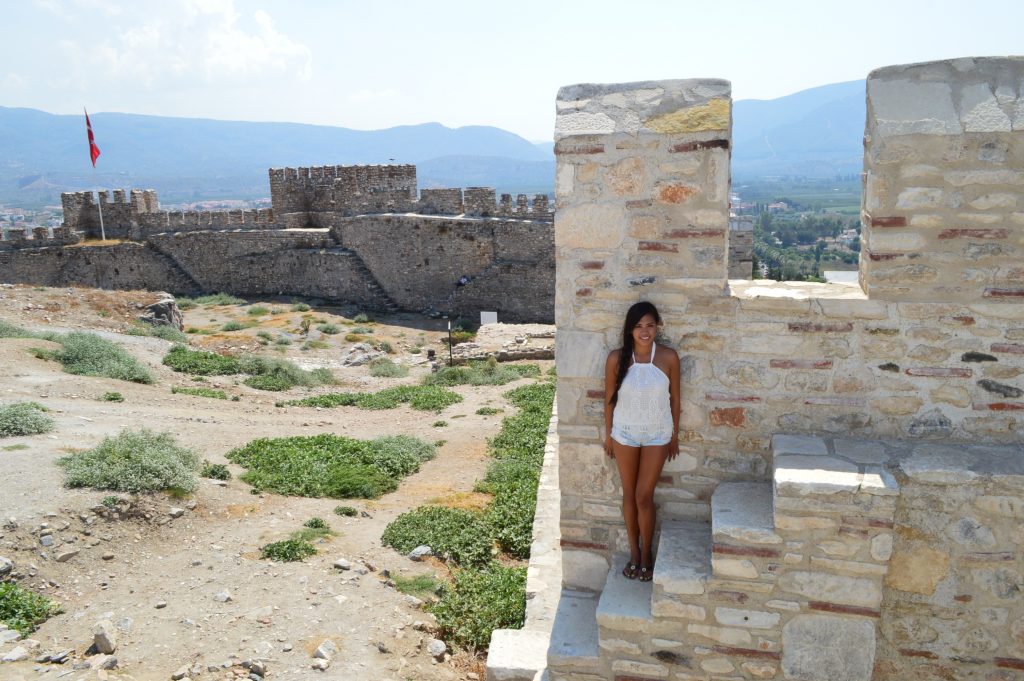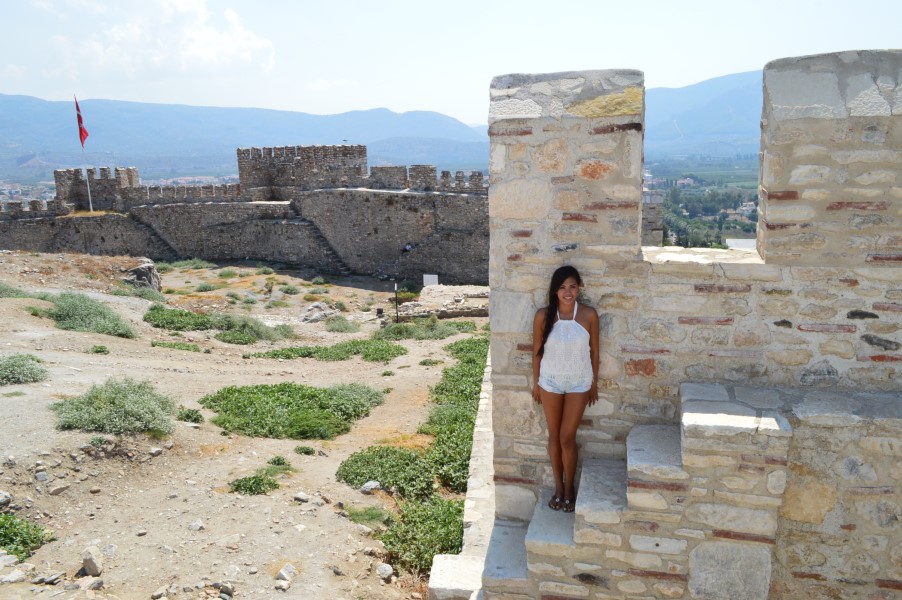If you are visiting ancient Ephesus be sure to also see the Basilica of St John and Ayasoluk Fortress. Fortunately, both sites are located only a few kilometers away from the ancient city ruins.
Although St John had lived the last years of his life in nearby Ephesus, he was not buried there. After his death in 100 A.C.E. he was ostensibly laid to rest inside a tomb on Ayasoluk Hill. Additionally, the Basilica of St John was built over his tomb 450 years after his death by the Byzantine Emperor Justinian.
It should be noted that there is some speculation the remains of St John are actually not inside of his tomb. In fact, Christians believe that he transcended into heaven on a beam of light at the end of his earthly life. This belief is given support because the tomb of St. John was opened during the reign of the Emperor Constantine and no remains were found.
Construction of the Basilica of St John
The construction of the Basilica of St John was ordered by the Byzantine Emperor Justinian in 548 A.C.E. and completed in 565 A.C.E. Unfortunately, many of the building materials for the basilica were taken from the nearby ruins of the Temple of Artemis. As a result, very little original material was left behind for archaeologists to reconstruct that majestic temple.
As a gesture of poetic justice, history decided that the Basilica of St John would also be completely destroyed in 1402 by the invading Mongol army. Therefore, it was to eventually meet the same fate as the Temple of Artemis.
In modern times there is only a skeletal structure of the Basilica of St John. Thus, in order to really appreciate the ruins you need a good working understanding of the original layout.
Archaeologists did their best to reconstruct the basilica with what remained. However, over time the basilica met the same fate as the Temple of Artemis. This is because over the centuries all the building materials that were of any use were hauled away for new construction. What is left is just skeletal remains of the Basilica of St John the Apostle.


Ephesus and the Basilica of St John
The construction of the basilica was completed in the 6th century A.C.E. This was just prior to the silting up and closure of the harbor at Ephesus. As a result, the economic value of this area was severely impaired. Additionally, at this time the area was frequently overrun by the invading Arab armies. As a result, the Ayasoluk Fortress was built around the basilica to protect it from the invading armies.
This is an aspect that makes a visit to the Basilica of St. John rather perplexing. Ostensibly, the basilica was built over the Tomb of St John the Apostle at Ayasoluk Hill. Indeed, the Ayasoluk Fortress remains in good condition and it surrounds the top of Ayasoluk hill where the basilica was supposed to be located.
However, the reconstructed ruins of the Basilica of St John the Apostle are clearly located outside the walls of the Ayasoluk Fortress. So I guess we have to draw our own conclusions about this disparity.
Miracles of St John’s Tomb
Nonetheless, throughout antiquity the dust from the tomb of St John was believed to work miracles and Christian pilgrims would come from far and wide to collect it. Indeed, this location is still a major draw for Christian pilgrims. In fact, a small fleet of tour buses arrived at the ruins just as we were leaving. There must have been at least two or three hundred rosy cheeked American pilgrims all dressed in white who were lining up to tour the basilica ruins.
The Hilltop Ayasoluk Fortress
In contrast with the basilica ruins, the Ayasoluk Fortress is in excellent condition. It still majestically surrounds the Ayasoluk Hill just as it did at the time of its construction in the 7th century A.C.E.
It is possible to enter the Ayasoluk Fortress walls and investigate the inside. From inside the fortress ramparts and its hilltop location there are sweeping views of the surrounding valley.




Cave of the Seven Sleepers
The “Cave of the Seven Sleepers” is located nearby and it is well worth the effort for a visit. Unfortunately, the cave entrance is fenced off so it is not possible to enter. However, the story of the seven sleepers and this location are very significant in Christian beliefs. Additionally, the “Companions of the Cave” are also referenced by the Prophet Muhammad in the Quran.
Generally, speaking the time period was in 250 A.C.E. and the Roman Emperor Decius was conducting a campaign of persecution against the Christians. The emperor threatened a group of young men with execution if they did not renounce their monotheist beliefs. However, they defied the emperor and after giving away all their earthly possessions they went inside a cave to pray.
Afterwards the young men fell into a deep sleep and the emperor had the cave entrance sealed when they were sleeping. The group of young men awoke 300 years later and exited the cave. They would only become aware of how long they had slept after walking down to the local village to buy food.

Additional Photos:



Recommended Turkey Travel Posts
See the Iconic Blue Mosque
See Istanbul Skyline from the Galata Tower
See Rumeli Fortress on Bosphorus Cruise

